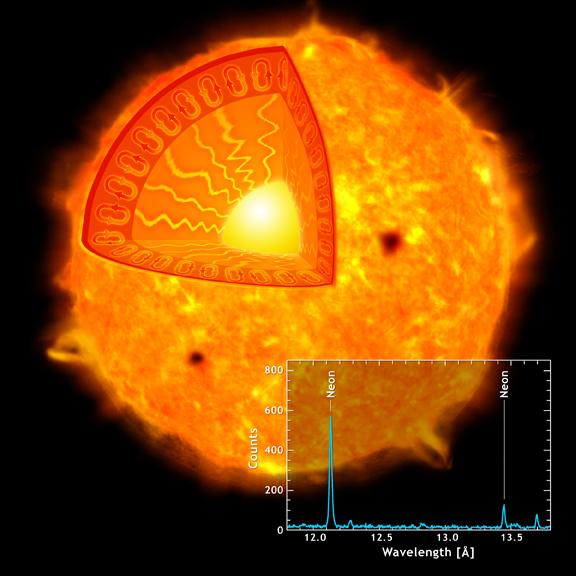Neon Abundance in Nearby Stars: X-ray Spectrum of II Pegasi, a nearby star, and an artist's schematic of the Sun.
Caption: Chandra measurements of the amount of neon in 21 nearby Sun-like stars may provide a better understanding of our nearest star, the Sun. The neon abundances in the outer atmospheres, or coronas, of the 21 stars are remarkably similar, and almost three times larger than estimates of solar abundances. These estimates, which for various reasons are quite uncertain, have led to theoretical predictions that disagree with observational tests. Neon plays an important role in regulating the rate at which energy flows from the center to the surface of the Sun. If the observed larger abundance of neon applies to the Sun, theoretical models for its interior structure (see illustration) can be brought back into agreement with the observations.
Chandra X-ray Observatory High Energy Grating X-ray spectrum.
|


